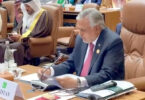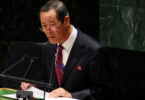Khaleeq Nazar Kiani
Power is the backbone of economic development and prosperity of a nation, but in Pakistan, it is the other way around. The circular debt is increasing, and people are paying the high costs of electricity compared to the regional countries.
Unfortunately, Pakistan-like countries that need big investment for their development often fall prey to the unrelenting greed of big corporate companies who are sitting on heaps of money. They know the weakness and constraints of money starve countries. By exploiting the situation, they locked the favorable terms with the connivance of corrupt rulers, simply ensuring the return of investment within 3 to 5 years.
The dooms story of Pakistan’s electricity sector started when in1994, the first power generation policy was introduced. It was flawed based on faulty planning and imaginary prediction. The policy base was built on the deficiency in the electricity demand, supply and forecasted the increase at 8% per annum. It was said that the current installed capacity is 10,800 MW, and an additional 54000 MW will be required in 2018. That the ambitious program cannot be financed in the public sector due to ceilings on Public Sector Development Programme (PSDP), so resource mobilization in the private sector is essential. This rhetoric was repeated in every successive policy. Now the country’s installed capacity is 35735 MW (excluding KE), and capacity payment due to non-utilization of energy is a problem. Seeing the mind-boggling profit, the Government also started doing business with its people and set up IPPs in the public sector by ignoring the welfare of the people.
Last month Ministry of Energy (Power Division), under Section 14 A of the NEPRA Act, unveiled ‘The new National Electricity policy 2021, which will be notified after the consent from the cabinet and CCI. It will repeal the power generation policy 2013. The policy is too lengthy and wordy. There was no need to include the guiding principles as efficiency, transparency, competition, financial viability, environment, and research and development are universal standards. The policy contains a long wish list, but how these will be achieved with old, rusted bureaucracy is a question.
The policy covers several areas- expansion in generation capacity on a competitive basis, utilization of local resources for generation, run of the river power generation plants, increasing renewable share in IGCEP, centralized transmission system expansion plan, PPP mode in the TSEP, and distribution system, restructuring/reformation of the market operator, preparation of indicative generation capacity expansion plan (IGCEP), budgeting the subsidies.
Some actions have been outlined on various issues such as special measures for the accountability of distribution companies staff, open access to all market participants, automation of system operator, elimination of sovereign guarantees for the purchase of power, privatization of state-owned entities, restructuring of state-owned distribution companies, the appointment of Board of Directors as per corporate rules.
To make the policy voluminous, some agreed and in vogue matters like continued distributed generation with net metering, help from Provincial Governments for recoveries, the continuation of uniform tariff, allowing the Government to incorporate any surcharge, compliance, and enforcement of standards and measures set by NEECA are also made part of the policy.
What is missing?
The people-centric energy problems are energy poverty, the high cost of electricity, and load shedding. Though universal access to electricity is mentioned in the policy vision, how it will be done is missing. The policy is silent on the timeline for the availability of electricity to all as required under SDGs.
Energy poverty is the number one issue, and after74 years of independence, 3,954,223 households out of 32,205,111(as per census 2017) are still without electricity. According to NEPRA report 2020, the count of electricity consumers is 28,250,888. A large number of households (1,448,094) without electricity are located in Balochistan, where out of 1,935,851 homes, only 477,757 have the electricity connection. (Consumers of QESCO as per NEPRA report 2020).
Protection of consumer interest has not been given importance. No concrete steps are suggested to end the red tape. As per the best universal practice, the power distribution license needs to be abolished. The companies should have permission to supply the electricity in an area after necessary regulatory approvals to open the door for private DISCOs.
What should be the priorities?
The policy has a limited focus on RE. Solar power has transformed the power generation landscape into one of the most affordable energy sources in the world. The 3,954,223 households having no electricity in this global world should be part of the policy/plan. Balochistan is the province where electricity poverty is in its extreme shape where 1.4 million households (three-fourth of the total households) have no electricity bulb and are not contributing significantly to the country’s GDP. It is a fact that Balochistan has a scattered population, and the laying of transmission lines for few hundred houses is a costly affair. The central and provincial governments must chalk out a comprehensive policy/plan to provide micro-grid solar power to these households on an emergency basis.
Government can pause to the construction of new big power plants for some period, and investors may be asked to invest in upgrading the existing transmission and distribution network.
As Pakistan is located in the solar high yield area, the solarization of 3,46,890 ( figures as per NEPRA report 2020) agriculture tube wells will be a great step towards saving hundreds of MW conventional energy while producing clean energy.
The grid-connected households can be encouraged to install a rooftop home solar system. Banks have to introduce solar home schemes on zero markup rates. Distribution companies should be given a target to support the rooftop home solar system on single-phase and where feeder load allows such number of households to be given the net metering facility on a first-come, first-serve basis. In urban areas, the rooftop home solar system has to be made part of the building code.
Government has to initiate the installation of the hybrid system (solar and conventional) in all Government buildings and public lighting.
People be incentivized to retrofit their gas appliances with electrical appliances, which will reduce the pressure on gas subsidy.
By taking all these measures, there will be a considerable jump in renewable energy generation as envisioned by Prime Minister. This one-time investment will create a new business chain that will increase the employment opportunities and GDP without the help of private IPPs. A clean energy revolution is needed to win the fight against energy poverty.






